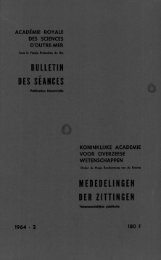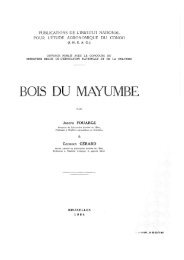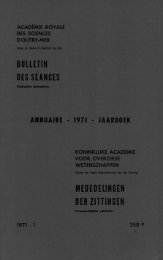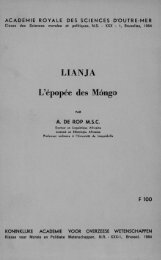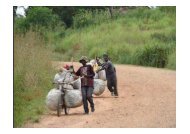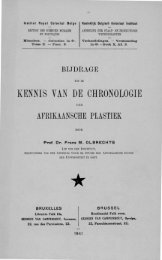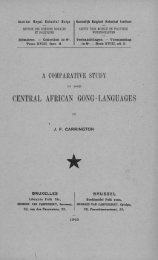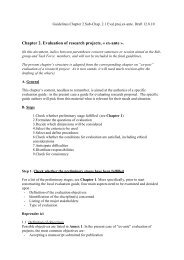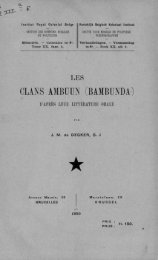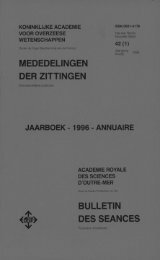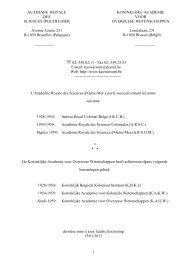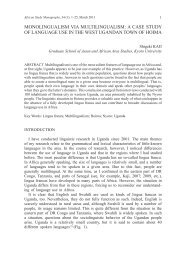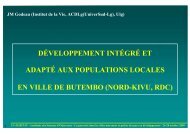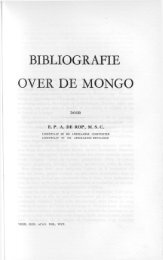(1973) n°3 - Royal Academy for Overseas Sciences
(1973) n°3 - Royal Academy for Overseas Sciences
(1973) n°3 - Royal Academy for Overseas Sciences
Create successful ePaper yourself
Turn your PDF publications into a flip-book with our unique Google optimized e-Paper software.
— 516 —<br />
colleagues in order to see if the exoerythrocytic stages differed<br />
from those of the ordinary type. This work was done by infecting<br />
mosquitoes on patients with P.v. hibernans malaria,<br />
and inoculating the sporozoites into splenectomised chimpanzees.<br />
The observations are not complete, but reveal so far no<br />
differences in the tissue stages.<br />
Rodent Malaria<br />
I should like to refer briefly to the malaria parasites of<br />
other mammals, because those of rodents are of exceptional<br />
interest. Plasmodium berghei was found ;în 1948 in the Belgian<br />
Congo by V in c k e and L ip s, in Grammomys surdaster. This<br />
was one of the most important discoveries in the history of<br />
malaria, because it provided a tool <strong>for</strong> malaria research of incomparable<br />
value. Naturally, every ef<strong>for</strong>t was made to elucidate<br />
the full life cycle of the parasite, but this proved very<br />
difficult. At last, in 1965, Y o e l i visited the <strong>for</strong>ests of the<br />
Haut-Katanga with his Belgian colleagues, observed the low<br />
temperature which prevailed, and finally dropped the temperature<br />
of his insectaries in New York from 28° C. to 18° C. Mosquitoes<br />
then became heavily infected; the sporozoites were injected<br />
into hamsters and exoerythrocytic schizogony was shown to<br />
be complete in 48 hours! The site was again found to be the<br />
parenchyma cells of the liver.<br />
Hepatocystis Spp.<br />
The tissue stages of a great variety of species of Hepatocystis<br />
and other haemoproteids have also been discovered since 1947.<br />
I might just refer to one instance, because R o d h a in and I in<br />
the same year (1953) both found the exoerythrocytic schizonts<br />
of H. epomophori in fruit bats in tropical Africa, he in the<br />
Congo (where in 1926 he had originally described the parasite<br />
as Plasmodium epomophort) and I in Kenya.<br />
Relapses<br />
At the beginning of this paper I said that I wanted to draw<br />
attention to some lacunae in our subject. The chief one is the



